Swedish river logging
by Lennart Elglennart.elg@swipnet.se
New: Turn of the century loggingI have found some new pictures of Swedish logging at the turn of the century. These pictures come from an encyclopedia of industrial technology handed down to me by my grandfather, who ran a small workshop where I spent many hours as a child. |
I came across a 1950's book with some wonderful photos of Swedish logging of that era, which I want to share. You will find many familiar scenes, which should come as no surprise given the role of Scandinavian loggers in the Pacific Northwest.
First some basic facts: Although located as far north as Alaska, the Gulf stream gives Scandinavia a climate comparable to Minnesota or Maine, but with less extremes. Geologically, the area is very old, with bedrock dating back 4.000 million years. This means mountains are well worn down, with gentle slopes. About 10.000 years ago, the ice cover from the last ice age retired, leaving lots of small lakes and wetlands behind.
Forest cover is mostly pine and fir, and since serious logging has been going on for four hundred years, most forests are second or third growth today. In the 17th century Sweden was the largest exporter of lumber in the world, and forest products are still an important part of our economy.
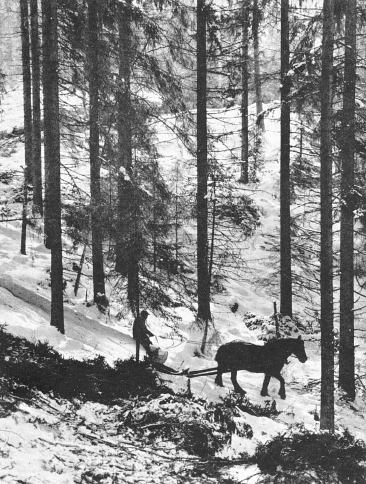
Logging in Sweden is mostly done in winter, when the frozen ground makes is easier to bring out the logs. Horse and sleigh was traditionally the main means of transportation.
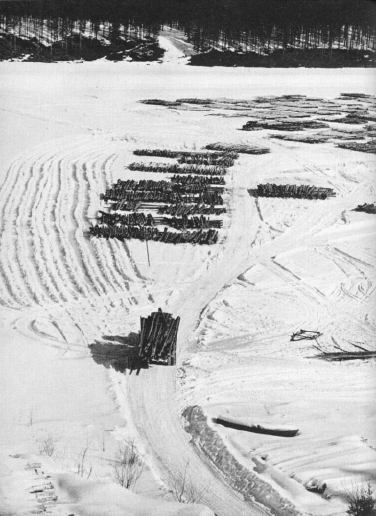
The gentle slopes means slowmoving rivers (reasonably at least...) which played a big part in transporting the logs well into the 1960's. The logs were stacked on the ice of frozen lakes or rivers in anticipation of the spring melt. Yes, the ice carried heavy trucks as well, as you can see at the bottom of the picture.


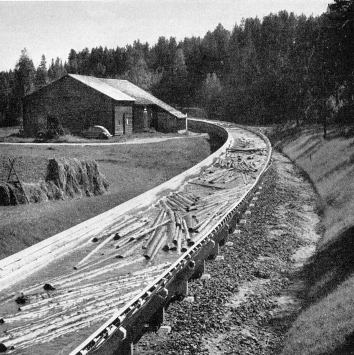

Most of the winter logging was done by local farmers or homesteaders, who added to the family income by working the forests in winter. As steady family men, these were not suitable objects for the romantic aura bestowed on lumberjacks in American folklore.
However, the dangerous lives of so called "floaters" filled a similar role in Swedish folk history. These were the dashing men who followed the logs downstream each spring, leaving a trail of broken hearts and fatherless children.

Their job was to keep the logs moving, dislodging logs wich got stuck along the river banks and breaking up logjams, usually with muscle power alone, but sometimes with a small dose of dynamite (another Swedish invention..)

Camps were located along the river, where they could spend the night. Each man carried his own cooking gear.
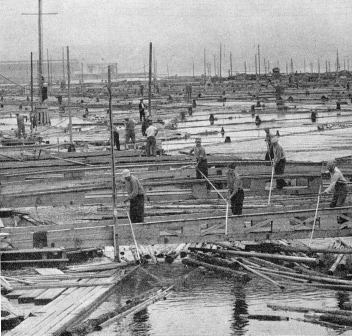
Despite its roughneck image, the river drives were highly organized enterprises in the typically Swedish way. Any landowner along the river who wished to transport timber was required by law to join a cooperative, which jointly funded and organized the river drives. As the logs were stacked on the ice, each log was marked with its owner´s trademark. At the end of its river journey, the logs entered an elaborate sorting station, where the logs were once again sorted by owner.
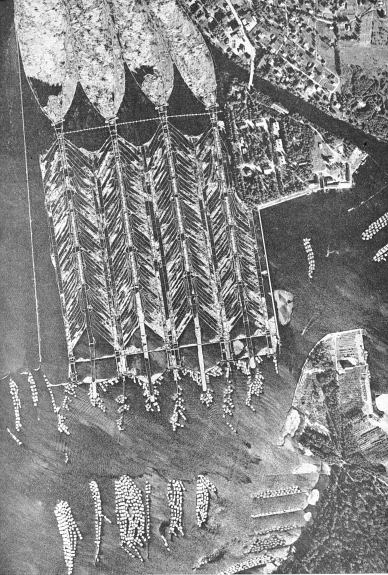
This is an aerial photograph of the biggest such sorting station in Sweden. Rather an elaborate affair as you can see..
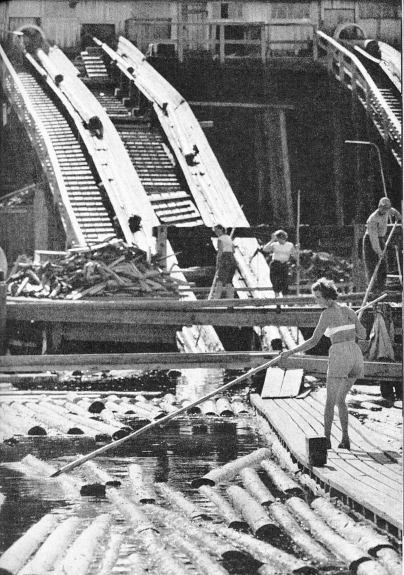
The end of the line. Yes, women were sometimes employed for the summer season, and Swedish summers can get warm , so I am not sure she dressed up (or off?) for the photographer.
Swedish emancipation leaves little room for macho lumberjacks..
Updated January 2001 by Lennart Elg